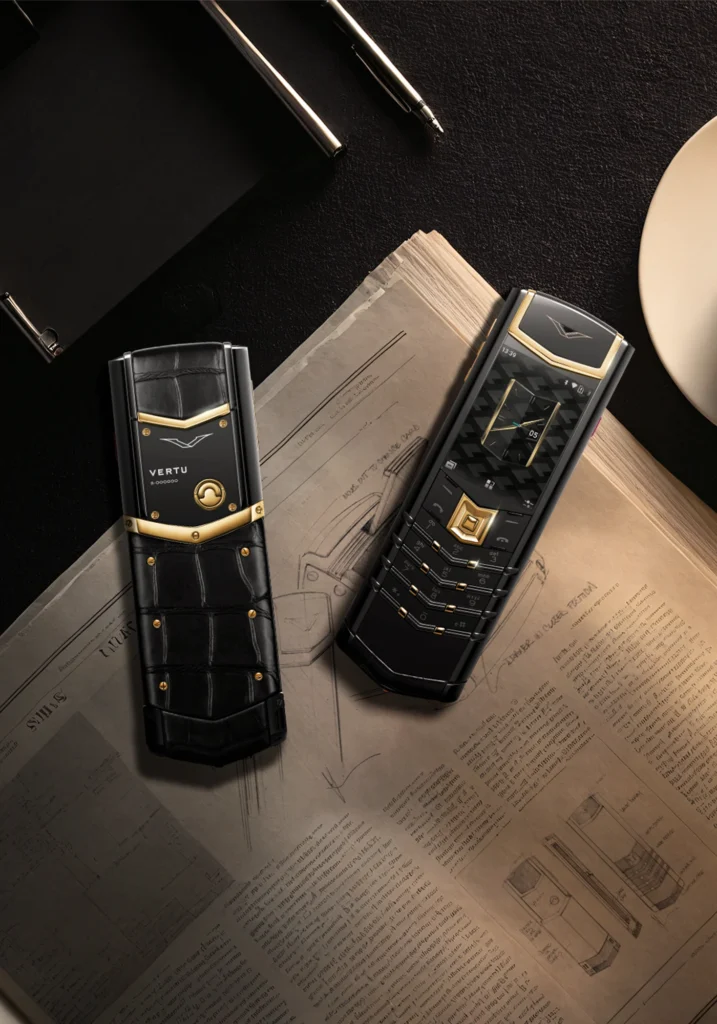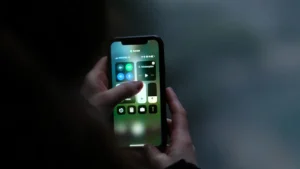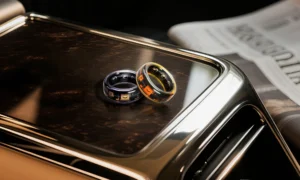
Keyboard phones for business still offer clear benefits for professionals in 2025. Many workers get more done and stay focused with a keyboard phone for business, especially when they need to type a lot for work. These devices help people maintain a good work pace and reduce the frequency of mistakes. Business leaders prioritize productivity, so choosing the right keyboard phone for business is crucial for success each day.
Key Takeaways
-
Keyboard phones let business users type fast and make less mistakes. They are good for lots of writing and editing work. Touchscreen phones are easy to carry and use. They support many apps and let you switch tasks fast. Hybrid devices have keys and a touchscreen. They are useful for jobs that need typing, scanning, and using apps. Pick the best device for your daily work and comfort. Think about security needs to help you work better. Devices with strong security and updates keep your data safe. They also help you save money in the long run.
Keyboard Phones
Typing Speed
A keyboard phone for business lets people type faster than most touchscreen phones. Many workers spend their day writing emails, reports, or code. They notice a big difference when using a keyboard phone. Studies say people type about 52 words per minute on a physical keyboard. On a touchscreen, they type about 38 words per minute. This extra speed helps people get more work done, especially when they are busy. Lots of business users like a full qwerty keyboard. It lets them type fast without looking down. This helps them do more than one thing at a time and pay attention to their work.
Accuracy
Physical keyboards help people write with fewer mistakes. Users can feel each key, so they make less errors and remember where keys are. They can even type if their hands are a little wet, which is hard on touchscreens. Physical keyboards let people write without always looking at the screen. This makes things safer and easier for everyone. But, the keys are smaller and can wear out after about 18 months, especially on sliding phones. Touchscreen phones have bigger keys and let people type in different ways. But they do not give the same feel as real keys. This makes it harder for some people to write long emails or documents.
Note: Fewer physical keyboard phones are made today because people want thinner phones and bigger screens, not because they are less good for work.
Ergonomics
A keyboard phone for business can be better for your hands when you write a lot. The feel of real keys helps stop your hands from getting tired or sore. Many people think these phones let them hold their hands in a comfy way. This is important if you write or code for a long time. But, keyboard phones are bigger than most new smartphones. This bigger size can make them harder to carry and use. Business people need to think about if they want comfort and good work speed or a small, light phone.
Touchscreen Phones

Flexibility
Touchscreen smartphones are very flexible for business people. You can switch tasks fast by tapping or swiping. These phones work with many business apps for different jobs. It is easy to change settings and organize files. You can use cloud services without trouble. Most people know how to use the interface, so new workers learn quickly. Touchscreens let you draw or edit pictures, which keyboard phones cannot do.
App Integration
Smartphones are great at using many apps together. Business people use special apps for talking, managing projects, and editing documents. Touchscreen phones make these apps easy to use and update often. Many apps use gestures, voice, or more than one finger to help you work better. This helps teams stay in touch and work well together. Most business software is made for smartphones first, so they work best on these devices.
Note: Touchscreen smartphones are good for reading, watching, and video calls. It feels normal to use these screens for work.
Portability
Touchscreen smartphones are easy to carry anywhere. They are thin, light, and fit in your pocket or bag. People who travel for work like having one device for calls, emails, and meetings. But there are some problems. Touchscreen phones can get scratched, cracked, or dirty. Fixing them costs a lot, especially for fancy phones. Wet, dirty, or very hot or cold places can make the screen not work well. Some people think touchscreens are not exact enough for careful work. Still, most business people like how easy and nice these phones are to carry.
Hybrid Devices
Combined Input
Hybrid devices mix real keypads with touchscreens. This lets workers use both ways to type and tap. They can type fast on keys or use the screen for other jobs. Some new hybrid devices, like the Zebra MC3300, have both options. The table below shows how each way helps at work:
|
Input Method |
Benefits |
Limitations / Notes |
|---|---|---|
|
Physical Keypads |
Many workers in stores and factories know these keys. They are good for typing words fast. You can set buttons for shortcuts. |
The keys do not move. They cost more to fix. Dirt or water can break them. |
|
Touchscreens |
You can change the keyboard for each app. The buttons can be bigger. You can hide the keyboard when you do not need it. New workers learn fast. |
You need to pay for special screens. Some workers are not used to this way. |
|
Hybrid Device (Zebra MC3300) |
Has a big touchscreen and three keypad choices. It can scan things close or far. Good for stores, factories, and warehouses. It is flexible and works well. |
Gives both ways to type and tap for many jobs and people. |
Use Cases
Hybrid devices are great where speed and being right matter. People in stores, factories, and warehouses use them for scanning and checking items. Keypads help them type fast. Touchscreens make it easy to move through apps. Workers can do many jobs in one day with one device. They can scan, type numbers, and use business apps without switching tools.
Tip: Hybrid devices make it easier to teach new workers because touchscreens are like smartphones.
Relevance in 2025
Hybrid devices are still needed in 2025. Many companies pick hybrid models for their teams. Recent studies show:
-
90% of companies will keep using hybrid sales models for hard deals.
-
Companies using hybrid ways can make up to 50% more money than those using just one way.
-
Hybrid models help companies hire more people, growing by 30%.
-
About 75% of teams in Europe and North America think remote meetings work as well as in-person ones.
-
Outside sales workers now spend almost half their time selling from far away.
Hybrid devices help these trends by making work easy and fast. They help teams stay in touch and get work done anywhere.
Choosing the Best Device
Workflow Fit
Every business works in its own way. Some teams write emails, reports, or code all day. Others spend time in meetings or use apps for work. The best device depends on what you do most. A keyboard phone for business is great if writing is your main job. People who write long messages or fix documents need real keys. This device helps them type fast and make fewer mistakes. Teams that use lots of apps or switch jobs quickly may like touchscreen phones more. Hybrid devices are good for jobs that need writing, scanning, and using apps. Each team should think about their daily work and pick the device that fits best.
Tip: Write down your team's main jobs. Match each job to the device that helps finish it fastest.
Productivity Needs
Productivity means doing more work in less time. Devices should help workers finish tasks quickly. A keyboard phone for business is good for people who write a lot. It lets them type fast and make fewer errors. Touchscreen phones are good for using apps, video calls, and sharing files. Hybrid devices help with both writing and app work. Teams should also care about security. In 2025, business users need strong passwords, biometrics, multi-factor authentication, secure Wi-Fi, VPNs, device encryption, antivirus apps, software updates, safe browsing, and backups. These things keep data safe and help teams work without worry.
Future-Proofing
Technology changes quickly. Businesses should pick devices that last a long time. A good device works with new apps, gets updates, and keeps data safe. Teams should check if the device works with their task system and other tools. They should also look for strong security. Devices that get updates often stay safe from new risks. Teams should not pick devices that may lose support soon. Choosing a device that lasts saves money and time.
Note: Devices with strong security and updates help companies avoid big problems later.
Keyboard Phone for Business
A keyboard phone for business is best for lots of writing and editing. It gives a real typing feel and helps people focus. This device is good for those who write or edit for hours. It might feel big in your pocket, but it helps you type fast and right. Teams who want comfort and write a lot should pick this device. If you need to use more apps or change tasks fast, a touchscreen or hybrid device may be better. Each business should look at its work, needs, and plans before choosing.
|
Device Type |
Best For |
Key Benefit |
Main Limitation |
|---|---|---|---|
|
Keyboard Phone |
Heavy writing, document editing |
Fast, accurate typing |
Bulkier, fewer new models |
|
Touchscreen Phone |
App-based work, quick tasks |
Flexible, portable |
Less ideal for long writing |
|
Hybrid Device |
Mixed tasks, scanning, writing |
Versatile, adaptable |
May cost more |
Keyboard phones still help many business people work quickly and with fewer mistakes in 2025. Touchscreen and hybrid devices are good for flexible work and using apps. Experts say you should pick a device that matches your daily jobs, comfort, and how easy it is to carry.
-
Convertible-hybrid laptops are best if you need a steady keyboard.
-
Detachable tablets are good for jobs in sales or healthcare.
-
Mobile Device Management tools and managed IT services keep teams safe.
-
Augmented Reality and AI assistants will change business devices in the future.
Teams should look at how they work, what security they need, and new trends before choosing a device.





